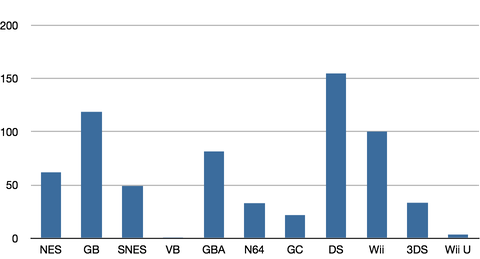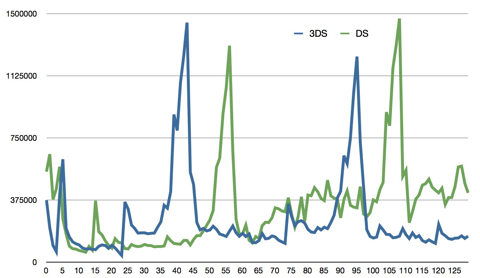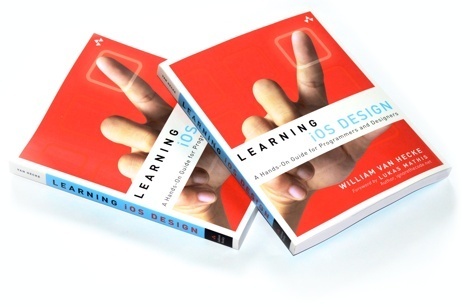Lukas Mathis's Blog, page 12
September 5, 2013
Lateral Thinking with Withered Technology
A while ago, I wrote about Chabudai Gaeshi, Nintendo’s design philosophy that entails effectively restarting a project when it is already well underway. Here’s another one of Nintendo’s design philosophies: Lateral Thinking with Withered Technology («Kareta Gijutsu no Suihei Shikō»).1
You only need to have a superficial knowledge of Nintendo to know who Shigeru Miyamoto is. He’s the guy who invented Mario and Zelda; how could you not know him. Fewer people know Gunpei Yokoi, even though he’s equally important to Nintendo’s history. Gunpei Yokoi was a videogame designer who created Nintendo’s Game & Watch handheld systems, and the Game Boy. He invented the D-pad, and designed Metroid.2
But perhaps even more importantly, he came up with the concept of «Lateral Thinking with Withered Technology». The basic idea is to use existing, cheap, well-established technology, and use it in new ways, thus allowing Nintendo to introduce new, innovative concepts at affordable prices.
It’s always seductive to take a single aspect of a company, and view that company’s whole history through that lens. It’s also usually wrong. But it’s surprising how well it works in this particular case. «Lateral Thinking with Withered Technology» seems to correlate quite well with Nintendo’s ups and downs. Whenever Nintendo produced videogame systems that used established technology in surprising ways, it did well. When it tried to compete on specs, it did poorly.
The Game Boy won against better-specced competitors, because it used cheaply available parts in an innovative package. The better-specced Game Gear and Atari Lynx could not compete. It’s even more plain with the Nintendo DS and the Wii. Both used cheaply available components (the low-end ARM chips in the DS, or the cheap accelerometers and infrared camera in the Wii Remote) in interesting new ways, and were able to outsell technologically superior competitors.
Nintendo tends to do less well when it tries to compete on specs. The Gamecube’s specs were easily superior to the PS2’s, and roughly on par with the Xbox’s, but the console failed. It was just a better version of Sony’s console, with fewer games. The Wii U’s controller sports a huge screen and increases the price of the Wii U, but fails to turn the console into something unique. We’ve all seen enough iPads to not be impressed or intrigued by the Wii U’s controller.4
The philosophy of Lateral Thinking with Withered Technology isn’t relegated to Nintendo. Apple, in particular, often tends to use established technology in new ways. Back in 2001, Apple noticed that small harddisks were becoming available in larger numbers, and at cheaper prices. Using these cheaply available disks in a new way — inside an MP3 player, instead of a laptop — allowed Apple to introduce a new kind of product. Of course, industry analysts didn’t realize what Apple had done, discounting the iPod for its mediocre specs.5
Which is exactly the same thing that happens to Nintendo every time it releases a new product that follows this design philosophy.
To my eternal shame, I actually didn’t know that this concept had a name, or originated with Gunpei Yokoi, until reader Mario Vukina sent me an email and pointed this out to me. 
And more. The Escapist has a good article on Gunpei Yokoi’s contributions. 
Image Credit: William Warby. 
Now, if every controller had its own reasonably good screen, and you could play local multiplayer games where players could keep secrets from other players (like this, but better), you might have an entirely different story. 
«No wireless. Less space than a nomad. Lame.» 
If you require a short url to link to this article, please use http://ignco.de/548

If you liked this, you'll love my book. It's called Designed for Use: Create Usable Interfaces for Applications and the Web. In it, I cover the whole design process, from user research and sketching to usability tests and A/B testing. But I don't just explain techniques, I also talk about concepts like discoverability, when and how to use animations, what we can learn from video games, and much more.
You can find out more about it (and order it directly, printed or as a DRM-free ebook) on the Pragmatic Programmers website. It's been translated to Chinese and Japanese.
September 3, 2013
More Nintendo
Gruber responds to some of the feedback he’s received about Nintendo’s situation. He writes:
Nintendo is doing poorly because they seem incapable of producing best-of-breed hardware, both in console and handheld.
Nintendo’s biggest success, the DS, was outdated by years the day it came out. For reference, it competed with the PlayStation Portable, which brought PS2-level graphics to portables. Meanwhile, the DS barely managed to produce 3D graphics at all.
The Wii, a success by any account, is the furthest Nintendo ever got from producing best-of-breed hardware. The Wii’s chipset was outdated by half a decade when it came out, its motion controls barely worked, and the console had no real online system.
The Wii and the DS succeeded because Nintendo made machines that enabled interesting games, not because it made best-of-breed hardware.
The criticisms levelled against the DS and the Wii were exactly the same ones Gruber now levels against the current Nintendo consoles. But Nintendo is at its best when it doesn’t try to compete with other devices on the market, and often at its worst when it does.1 Nintendo is not competing on hardware. It’s competing on entertainment value.
Put differently, Nintendo doesn’t sell technology. Nintendo sells toys.
Here’s an example of that. Gruber mentions the resistive touchscreens Nintendo uses as an example of where Nintendo’s hardware falls short. It’s true that Nintendo’s touchscreens would be terrible on a mobile phone. But I think this is actually an example that illustrates how it can be to Nintendo’s advantage that it doesn’t have to compete with mobile phones. Nintendo’s stylus-based resistive touchscreens enable interesting games and experiences that would work less well on a capacitive touchscreen. New Super Mario Bros. U, for example, is filled with handdrawn notes drawn by other players on their Wii U gamepads. Yes, you could do the same on a capacitive touchscreen, but drawing with a stylus works much better on a resistive screen, so Nintendo includes that feature in many of its games.
A touchscreen is better technology, but a resistive screen with a stylus might, in some cases, make for a better toy.
The problem with the Wii U isn’t that it’s bad technology. It’s that it is, in many ways, a bad toy.
Gruber writes:
No one is arguing the 3DS hasn’t sold OK, but they’re certainly not great. They only look good compared to the Wii U, which appears to be a failed platform.
The 3DS is currently the 12th best-selling console of all times, after only three years on the market.
I’d turn this around: the 3DS sales only look bad compared to the DS, which is on track to becoming the best-selling console of all time. It’s true that the 3DS is not on the same track. But I think it’s unreasonable to expect every Nintendo console to be on track to becoming the best-selling console of all time.
Nintendo’s story has never been one of continuous growth. It’s been one of constant ups and downs. Look at this chart, which shows Nintendo’s total console sales numbers:2

The GBA didn’t beat the Game Boy. The SNES didn’t beat the NES. What’s going on with Nintendo is nothing unusual. It’s what’s been happening ever since they started making videogame hardware.
I’m sure Nintendo wants the 3DS to sell better than the DS, and the Wii U to sell better than the Wii. Fortunately, Nintendo doesn’t need every console to sell 120 million units. Nintendo is a small company. It only has 5000 employees. It doesn’t need to be the number one videogame hardware maker to sustain itself.
And that brings me to one final company to compare Nintendo to: RIM.
If you buy an iPhone, you’re not going to also buy a Blackberry.3 The same doesn’t apply to videogame consoles.
This is not like RIM, where competition made BlackBerries obsolete. The Wii U isn’t failing because of competition, or because there’s no market for TV consoles.4 It’s failing because it is a bad product.5 Nintendo, not Apple, and not anyone else, caused the Wii U to fail.
The way to fix this is to make a better toy, not to make games for Apple.
Make two great games for iOS (iPhone-only if necessary, but universal iPhone/iPad if it works with the concept). Not ports of existing 3DS or Wii games, but two brand new games designed from the ground up with iOS’s touchscreen, accelerometer, (cameras?), and lack of D-pad/action buttons in mind. (“Mario Kart Touch” would be my suggestion; I’d buy that sight unseen.) Put the same amount of effort into these games that Nintendo does for their Wii and 3DS games. When they’re ready, promote the hell out of them. Steal Steve Jobs’s angle and position them not as in any way giving up on their own platforms but as some much-needed ice water for people in hell. Sell them for $14.99 or maybe even $19.99.
Nintendo will release Mario Kart 8 for the Wii U at the end of this year. Despite of the Wii U selling poorly, I would be very surprised if Mario Kart 8 sold less than 5 million copies over the course of its life. Nintendo never discounts games much, so they’ll make at least 30 bucks a game.6 That’s 150 million US$.
They’d have to sell 15 million copies of a Mario Kart game at 15$7 on iOS to make the same amount of money, and they’d end up devaluing the Mario Kart brand.8 I just don’t see how this could possibly work, or be a good idea.
Here’s what I think the most likely scenario is for this console generation: the 3DS will continue selling well, though not at DS levels. The Wii U won’t, but will get some good games (mostly from Nintendo), and eventually sell about as well as the Gamecube. Meanwhile, as hardware prices fall, the installed base of its consoles goes up, and more first-party games are released, Nintendo’s profits will increase gradually. Nintendo won’t go out of business, nothing spectacular will happen, the world won’t end.
If Nintendo releases any iOS apps, it’ll be more Pokémon stuff.
Most of this whole discussion is based on the expectation that Nintendo will continue (and must continue) being as dominant as they were during the Wii/DS years. But these years were a fluke. Nintendo never did that well before, and possibly won’t do that well again. Fortunately, it doesn’t have to.
The Virtual Boy sold so poorly that it doesn’t even have a graph, and the Pokémon mini, another failed Nintendo console, is not listed, because I couldn’t find sales numbers. 
Yes, there are exceptions. But they are just that: exceptions. 
The PS4 is going to do just fine. Not so sure about the Xbox One, though. 
The new controller isn’t compelling, it’s unwieldy. There’s no clear story that shows why you’d want or need this kind of controller. And there are not enough good, unique Wii U games. 
Probably much more than that. Games sold in the online store are pure profit, and retail barely makes any money on game sales, so most of a game’s price goes to Nintendo 
Of which 5 bucks goes to Apple. 
Since the Wii U’s capabilities aren’t that far ahead of a modern smartphone, it’s unlikely that an iPhone version of Mario Kart would be substantially cheaper to develop than a Wii U version. 
If you require a short url to link to this article, please use http://ignco.de/547

If you liked this, you'll love my book. It's called Designed for Use: Create Usable Interfaces for Applications and the Web. In it, I cover the whole design process, from user research and sketching to usability tests and A/B testing. But I don't just explain techniques, I also talk about concepts like discoverability, when and how to use animations, what we can learn from video games, and much more.
You can find out more about it (and order it directly, printed or as a DRM-free ebook) on the Pragmatic Programmers website. It's been translated to Chinese and Japanese.
August 29, 2013
Nintendo
For the longest time, Microsoft analysts had this unhealthy obsession with Apple. The logic went a bit like this: Apple is doing poorly because Microsoft won the PC war. If only Apple stopped making hardware and licensed their OS to other manufacturers, surely, it would do much better.
Of course, Mac users thought this notion quite odd, for good reasons. They liked Macs precisely because the same company made both hardware and software, which resulted in a product that worked much better than your average Windows PC.
Nowadays, Mac analysts have a similar obsession with Nintendo. The logic goes a bit like this: Nintendo is doing poorly because Apple and Samsung own the market for portable devices. If only Nintendo stopped making hardware and published their games for iOS instead, surely, it would do much better.1
Mac users should understand why this argument is flawed. Fantastic games like Super Mario 3DS Land can only exist because Nintendo makes both the hardware and the software. That game simply could not exist on an iPhone.
But there’s an additional problem with this argument: the premise is completely wrong. Nintendo is actually not doing poorly in the portable market. iPhones have not destroyed the market for portable gaming devices. The 3DS is, in fact, doing very well.
Let’s look at the numbers. The 3DS’s predecessor, the Nintendo DS, is currently the second-best selling console of all time, slightly behind Sony’s PS2. It’s possible that the DS will end up taking that crown from the PS2, and become the best-selling console of all time. How do the 3DS’s sales compare to its predecessor’s? This graph compares weekly sales during the first 130 weeks of the DS and 3DS (aligned to their launch dates).2

Because the two launches didn’t occur during the same time of the year, the holiday spikes don’t align, but I think the picture is clear: sales of the 3DS are not that far behind the second-most popular videogames console of all time. After 130 weeks on the market, the DS sold 43 million units, while the 3DS sold 33 million units.3
The hypothesis that Nintendo needs to abandon the hardware market because the iPhone destroyed the market for portable gaming just isn’t consistent with reality.
Console sales are typically dictated by the games that run on those consoles, not by their competition. Different devices can coexist peacefully, if each of them has unique games. The Wii, the Xbox 360, and the PS3 all sold quite well during the last generation, because all of them had good, exclusive games. Many people ended up buying more than one console, because they wanted to play exclusive games. In other words, if you want to play a Mario game, or the new Zelda, the fact that you own an iPhone won’t prevent you from also buying a 3DS.
What’s more, Nintendo doesn’t need to sell many consoles to make a lot of money. The Gamecube, for example, clearly lost against its competitors. Yet even when its console did poorly, Nintendo’s own games did very well. Super Mario Sunshine for the Gamecube sold over 6 million units, in a market where a million units sold is usually considered a success. The Gamecube «failed» against its competitors, selling only 21 million units over its whole lifespan, but Nintendo still came out ahead.
I understand that Nintendo’s games running on an iPhone is an attractive notion. I’d like to have some Nintendo games on my phone. But Nintendo would have to sell a lot of iOS games at iOS game prices4 to make up for the console games it sells a console game prices.5
Is everything rosy for Nintendo? No, of course not. The Wii U is doing very poorly. But this isn’t because the Apple TV is preventing anyone else from entering the market for stuff that connects to TVs.
Further Reading
John Gruber’s short comment on the 2DS prompted me to write this (though he’s not the only Apple analyst who wrote something along those lines). Craig Grannell’s take on the situation.
More data on Nintendo from macstories.net, including this important point:
The idea that Nintendo should make games for iOS is fascinating, easy to grasp and follow, but flawed. Nintendo doesn’t work like Apple. And, more importantly, Nintendo can’t — and doesn’t want to — be Apple. Nintendo is a mix of a toy company and a game company: consoles exist to support Nintendo’s crown jewels — the games and first-party franchises.
A future where you can run Zelda on an iPhone might seem quite inviting, until you consider the trajectory of the quality of Sega’s games, post their own exit of the hardware market. 
The sales numbers are from VGChartz.com. 
This already ranks the 3DS as number 12 on the list of all-time best selling consoles. By the way, the PS Vita has sold less than 6 million units so far. Why not ask Sony to exit the console business? 
Most of Nintendo’s franchises would work poorly with a touchscreen. Maybe they could release playable, full-scale versions of Mario or Zelda games if they targeted Apple’s controller API, but then they’d limit their audience to the few people who actually buy controllers for their iOS devices, and they would still have to charge iOS App Store prices. Just look how well Square Enix’s premium-priced games sell on iOS. It just doesn’t add up. 
It’s easy to misunderstand Apple if you assume that they work like Microsoft or Lenovo, but the same is true for Nintendo if you assume that they work like Apple. Check out Nintendo’s current assets and debt. 
If you require a short url to link to this article, please use http://ignco.de/546

If you liked this, you'll love my book. It's called Designed for Use: Create Usable Interfaces for Applications and the Web. In it, I cover the whole design process, from user research and sketching to usability tests and A/B testing. But I don't just explain techniques, I also talk about concepts like discoverability, when and how to use animations, what we can learn from video games, and much more.
You can find out more about it (and order it directly, printed or as a DRM-free ebook) on the Pragmatic Programmers website. It's been translated to Chinese and Japanese.
August 6, 2013
Ego Depletion
If our work drains a user’s cognitive resources, what does he lose? What else could he have done with those scarce, precious, easily-depleted resources? Maybe he’s trying to stick with that diet. Or practice guitar. Or play with his kids.
That one new feature you added? That sparkly, Techcrunchable, awesome feature? What did it cost your user?
Ego depletion is the idea that you only have a limited amount of self-control that you can «spend» each day. Every decision you make uses part of that limited resource and makes it harder for you to make good decisions; breaks «refill» your ability to make thoughtful (or any) decisions.
In their paper Extraneous Factors in Judicial Decisions, authors Shai Danzigera, Jonathan Levavb, and Liora Avnaim-Pesso note that the longer judges work, the more unfavorable rulings they make:
We find that the percentage of favorable rulings drops gradually from ≈65% to nearly zero within each decision session and returns abruptly to ≈65% after a break.
The New York Times has a good article on the topic.
Applications that force users to make decisions deplete that same resource. The needless setting in your app, or that unclear screen that requires users to think about what they’re supposed to do, might actually mean that somebody stays in prison who should have been released.
I’m unbelievably happy to see her writing again. 
If you require a short url to link to this article, please use http://ignco.de/543

July 22, 2013
Spolsky on Patents
Software developers don’t actually invent very much. The number of actually novel, non-obvious inventions in the software industry that maybe, in some universe, deserve a government-granted monopoly is, perhaps, two.
The other 40,000-odd software patents issued every year are mostly garbage that any working programmer could “invent” three times before breakfast. Most issued software patents aren’t “inventions” as most people understand that word. They’re just things that any first-year student learning Java should be able to do as a homework assignment in two hours.
Nevertheless, a lot of companies large and small have figured out that patents are worth money, so they try to file as many as they possibly can. They figure they can generate a big pile of patents as an inexpensive byproduct of the R&D work they’re doing anyway, just by sending some lawyers around the halls to ask programmers what they’re working on, and then attempting to patent everything. Almost everything they find is either obvious or has been done before, so it shouldn’t be patentable, but they use some sneaky tricks to get these things through the patent office.
If you require a short url to link to this article, please use http://ignco.de/542

June 27, 2013
An Unintended Side Effect
Every time I accidentally invoke full-screen on my iMac or forget to close my eyes during an iPad Kindle page transition (mercifully, iBooks uses a page-turn animation under iOS 6), I wish you could feel what I feel—that sense of nausea that knocks me for six and makes using a device or Mac anything but pleasurable.
If you require a short url to link to this article, please use http://ignco.de/541

Women in Tech
It’s no secret that women and minorities are seriously underrepresented in tech and science. Here are two crowdfunding projects that want to fix that problem, and deserve your support:
App Camp For Girls aims to teach girls how to design and build iPhone apps. The team, led by Jean MacDonald, is raising money to fund sessions in Portland (for now), and in other cities in the future.
Mosa Mack: Science Detective are short animated science mysteries aimed at girls and students of color. The company is raising money to produce the first two episodes.
If you require a short url to link to this article, please use http://ignco.de/540

June 21, 2013
Learning iOS Design
In other book news, my friend Bill Van Hecke wrote a great book on design called Learning iOS Design.

If you’re a Mac user, you’ve probably used software made by the Omni Group. If you’ve used software made by the Omni Group (and you’re reading this blog), you’ve probably wondered about their design process. Well, wonder no more. Bill is the Omni Group’s User Experience Lead, and in this book, he’s laying it all out for you.
I should probably mention that Bill graciously (but perhaps somewhat ill-advisedly) asked me to write the foreword for his book. Which I did. Because the book is fantastic. Buy it on paper or for your Kindle.
If you require a short url to link to this article, please use http://ignco.de/538

If you liked this, you'll love my book. It's called Designed for Use: Create Usable Interfaces for Applications and the Web. In it, I cover the whole design process, from user research and sketching to usability tests and A/B testing. But I don't just explain techniques, I also talk about concepts like discoverability, when and how to use animations, what we can learn from video games, and much more.
You can find out more about it (and order it directly, printed or as a DRM-free ebook) on the Pragmatic Programmers website. It's been translated to Chinese and Japanese.
June 18, 2013
"Designed for Use" in Japanese
In addition to English and Chinese, my book is now also available in Japanese.

If you require a short url to link to this article, please use http://ignco.de/536

If you liked this, you'll love my book. It's called Designed for Use: Create Usable Interfaces for Applications and the Web. In it, I cover the whole design process, from user research and sketching to usability tests and A/B testing. But I don't just explain techniques, I also talk about concepts like discoverability, when and how to use animations, what we can learn from video games, and much more.
You can find out more about it (and order it directly, printed or as a DRM-free ebook) on the Pragmatic Programmers website. It's been translated to Chinese and Japanese.
May 14, 2013
Lorem Ipsum
Facebook Home was flat-out badly designed: it’s designed for optimal input and failed to consider real-world usage.
Excerpt from For 100 of Our Closest Friends, Volume Three:
Don’t use placeholder data when designing. Get as much real-life data generated by real human beings as possible and design for that. If you don’t, you’re in for a surprise.
If you require a short url to link to this article, please use http://ignco.de/534

Lukas Mathis's Blog
- Lukas Mathis's profile
- 2 followers




